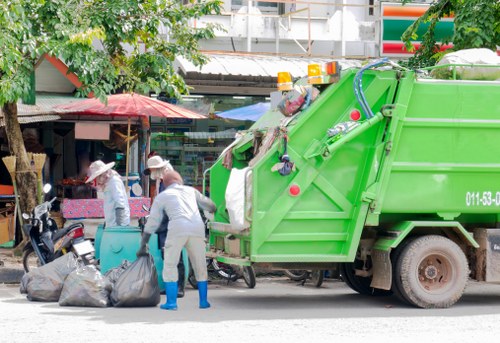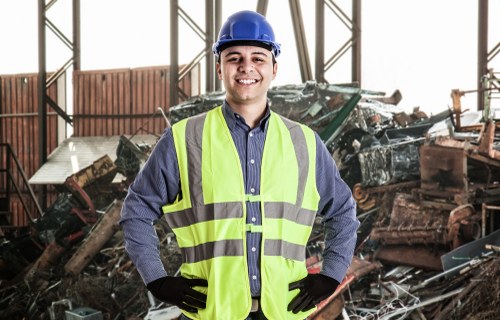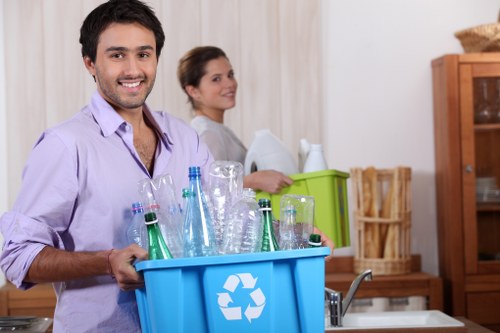Waste Disposal in Rubbish Clearances: Essential Strategies for Effective Management
Overview and Importance of Waste Disposal in Rubbish Clearances

Waste Disposal in Rubbish Clearances is a critical aspect of modern urban management that not only supports visual aesthetics but also protects public health and the environment. In today’s rapidly expanding urban landscapes, a systematic approach to rubbish clearance is crucial. Municipalities, private companies, and communities are increasingly prioritizing efficient waste management practices in order to maintain sustainable living conditions. Whether you are a homeowner or a business owner, understanding the complexities and necessity of proper waste disposal strategies ensures that rubbish clearances are conducted safely and responsibly.
In many areas, the integration of smart technology and advanced sorting methods is transforming how waste is managed. Local governments and private sector partnerships have introduced innovative techniques that enhance both recycling rates and the safe elimination of hazardous materials. These continually evolving strategies are designed to adapt to the increasing amount of waste generated and to minimize the negative impact on the environment. Community involvement, regulatory measures, and technological advancements are all pivotal factors in achieving effective waste management procedures.
The challenges of waste clearance extend beyond mere collection and removal. It involves the planning, sorting, and eventual repurposing or safe disposal of materials in ways that reduce the burden on landfills and limit environmental hazards. This multi-dimensional topic not only requires strategic planning but also the collaboration of various stakeholders including environmental experts, regulatory agencies, and waste management companies. The awareness and adoption of efficient waste disposal methodologies are steadily becoming a cornerstone in the modern approach to rubbish clearances.
Key Components and Best Practices in Waste Disposal

Effective waste disposal in rubbish clearances involves a blend of planning, technology, and community engagement. Understanding the essential components of successful waste management helps in setting up consistent protocols across different environments. Primarily, waste disposal systems are focused on separating recyclable materials, treating hazardous waste safely, and ensuring that non-recyclable items are disposed of with minimal environmental impact. The strategies deployed here are designed to address both short-term challenges and foster long-term ecological benefits.
Modern waste disposal methods are enhanced through the adoption of cutting-edge technologies such as digital tracking, automated sorting systems, and data-driven analytics. These tools help waste management companies to monitor waste streams, optimize collection routes, and accurately predict future waste trends. Furthermore, the integration of eco-friendly technologies plays a significant role in converting waste into energy, thereby reducing overall carbon footprints. This evolution in waste management underscores the importance of proper disposal mechanisms within the broader spectrum of rubbish clearances.
The effective integration of lists and systematic approaches accentuates the entire process. Consider the following factors when developing a robust waste disposal plan:
- Waste Segregation: A dual process of separating recyclables from general waste to enhance reusability.
- Collection Efficiency: Scheduling and route optimization for timely waste pick-up.
- Recycling Integration: Implementing systems that ensure maximum material recovery.
- Hazard Management: Safe handling and disposal of hazardous substances.
Environmental Impacts and the Role of Sustainability

The environmental repercussions associated with improper rubbish clearance are well documented. Improper waste disposal can lead to soil and water contamination, compromise air quality, and endanger wildlife. In a bid to mitigate these impacts, strategic waste disposal initiatives have incorporated sustainability at their core. By focusing on reducing landfill usage and promoting recycling and reuse, communities can help preserve natural resources while minimizing harmful emissions. Embracing sustainability in waste management is not only a regulatory requirement in many regions, but it is also a moral imperative for ensuring a healthier planet.
Several innovative projects now focus on circular economy models that turn waste disposal in rubbish clearances into a resource recovery process. These projects emphasize turning everyday waste materials into new products, thus reducing the demand for virgin raw materials. With comprehensive strategies in place, many municipalities now offer programs that encourage residents to actively participate in sustainable waste handling practices. These initiatives are further boosted by educational campaigns, which are pivotal in shifting public perception towards a more responsible pattern of consumption and disposal.
It is important to highlight some of the sustainable practices that have revolutionized waste management:
- Recycling and Reuse Programs: Initiatives that support the identification, separation, and re-processing of recyclable materials.
- Composting: Transforming organic waste into nutrient-rich soil additives is effective in reducing landfill use.
- Energy Recovery: Converting waste into electricity through modern incineration practices offers dual environmental and economic benefits.
Regulatory Guidelines, Safety Measures, and Best Practices

In today’s world, waste disposal in rubbish clearances is governed by a complex framework of regulations and standard operating procedures designed to ensure safety and minimize environmental hazards. Governments and local authorities have meticulously developed guidelines that not only prescribe how waste should be handled but also how it is to be monitored, reported, and, if necessary, penalized. These regulations ensure that waste management companies maintain high standards, protect worker safety, and adhere to environmental norms. Progress in these areas has fostered the development of robust systems for managing the disposal of both hazardous and non-hazardous materials.
Businesses and waste management professionals continuously update their methods in compliance with these guidelines. Key aspects include:
- Licensing and Accreditation: Ensuring that companies are properly licensed and meet strict regulatory standards.
- Compliance Checks: Routine audits and inspection protocols are implemented to uphold safety norms.
- Employee Training: Enhanced training programs ensure that all personnel are equipped with the knowledge to manage waste responsibly.
Beyond these aspects, an often overlooked detail is the impact of technology and digital transformation on regulatory compliance. Advanced sensors coupled with IoT solutions are used to monitor waste levels, and innovative software applications track compliance in real time. This not only minimizes potential risks but also streamlines the entire process of rubbish clearance. In such a dynamic landscape, continual upgrades and technological advancements ensure that the highest standards are maintained in every phase of waste disposal.
Innovative Approaches and Future Trends in Waste Management

Embracing New Technologies and Community Initiatives
Looking forward, the future of waste disposal in rubbish clearances is set to be shaped by cutting-edge innovations and enhanced community engagement strategies. The sustainability trend has driven many companies to explore new methods for waste minimization and energy recovery. The introduction of artificial intelligence and machine learning into waste sorting systems is one significant advancement that streamlines identification and separation processes, reducing human error and increasing operational efficiency. This technological leap is paving the way for smarter and more responsive waste management systems.
Technological progress is complemented by growing community involvement. Citizens in numerous localities are now more informed than ever about environmental issues and are actively participating in programs to monitor, reduce, and recycle waste. In partnership with municipal authorities, non-profit organizations and private companies are driving initiatives to educate the public about best practices in waste disposal. This collaborative model ensures that every stakeholder plays a role in the overall health of the urban ecosystem. Book your service now to be part of the collective action towards cleaner communities.
As the field of waste disposal in rubbish clearances evolves, several emerging trends show promise for radically transforming waste management in the coming decades. Key trends include:
- Smart Bins and Sensors: These technological innovations allow for real-time monitoring of waste levels and automatic alerts for collection services.
- Renewable Energy Integration: More recycling centers are now converting waste energy into electricity, thereby promoting green technologies.
- Decentralized Waste Processing: Smaller, localized treatment facilities are being deployed to reduce transportation emissions and improve efficiency.